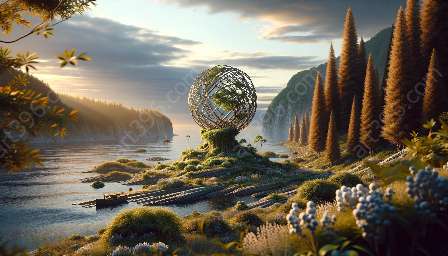Site-specific environmental art has become a powerful tool for conveying messages about climate change, sustainability, and human impact on the environment. Through intricate and thought-provoking installations, artists have found creative ways to address these critical issues, leading to greater awareness and potential behavioral change.
The Role of Site-Specific Environmental Art
Site-specific environmental art, also known as environmental or eco art, is a genre of art that is intrinsically linked to the environment. It is created at a specific location and often integrates natural materials, local culture, and the environment’s natural processes into the artwork.
Artists who specialize in this form of expression often seek to raise awareness and prompt action on issues such as climate change, sustainability, and human impact on the environment. These works are usually immersive and designed to elicit emotional responses, making them particularly impactful in conveying urgent messages about environmental conservation and ecological balance.
Addressing Climate Change through Art
Climate change is one of the most pressing issues of our time, and site-specific environmental art provides a unique platform for addressing it. These artworks can visually depict the impacts of climate change, such as melting glaciers, rising sea levels, and disrupted ecosystems. They can also convey hopeful messages about the need for sustainable practices and conservation efforts to mitigate the effects of climate change.
By bringing art into outdoor spaces, artists have the opportunity to engage communities and spark conversations about climate change. Public art installations that address this issue can bring attention to the urgent need for global action and convey a sense of interconnectedness with nature.
Exploring Sustainability through Art
Sustainability is another critical theme that site-specific environmental art often tackles. Artists create installations that explore the potential for sustainable living and the importance of preserving natural resources. These works can utilize recycled materials, highlight sustainable practices, and inspire viewers to reconsider their own consumption habits and environmental impact.
Additionally, site-specific environmental art can become a sustainable practice in and of itself, as it often aims to have minimal impact on the environment and may even contribute positively to local ecosystems. The thoughtful integration of art and nature in these installations can serve as a model for sustainable artistic practices.
Human Impact on the Environment in Art
Human impact on the environment is a central theme in site-specific environmental art. These artworks can address issues such as deforestation, pollution, habitat destruction, and biodiversity loss. By engaging with these topics through art, viewers are encouraged to reflect on their own behaviors and the collective impact of human activities on the environment.
Artists often highlight the interconnectedness of human life and the natural world, prompting viewers to consider their role as stewards of the planet. This can lead to increased awareness and a sense of responsibility for addressing environmental challenges, ultimately inspiring positive changes in individual behaviors and societal attitudes.
Conclusion
Site-specific environmental art plays a crucial role in addressing climate change, sustainability, and human impact on the environment. Through its engaging and site-specific nature, this form of art has the potential to inspire profound reflections and motivate action. By leveraging the power of art to communicate pressing environmental concerns, artists continue to contribute to a global dialogue aimed at creating a more sustainable and harmonious relationship between humanity and the natural world.

